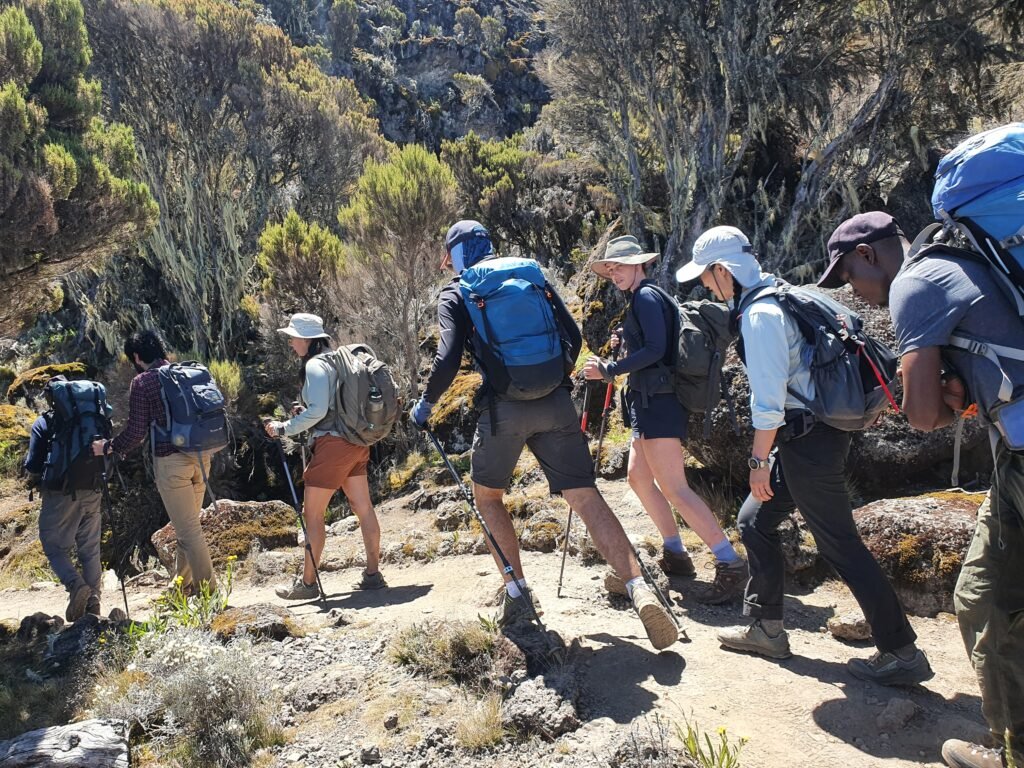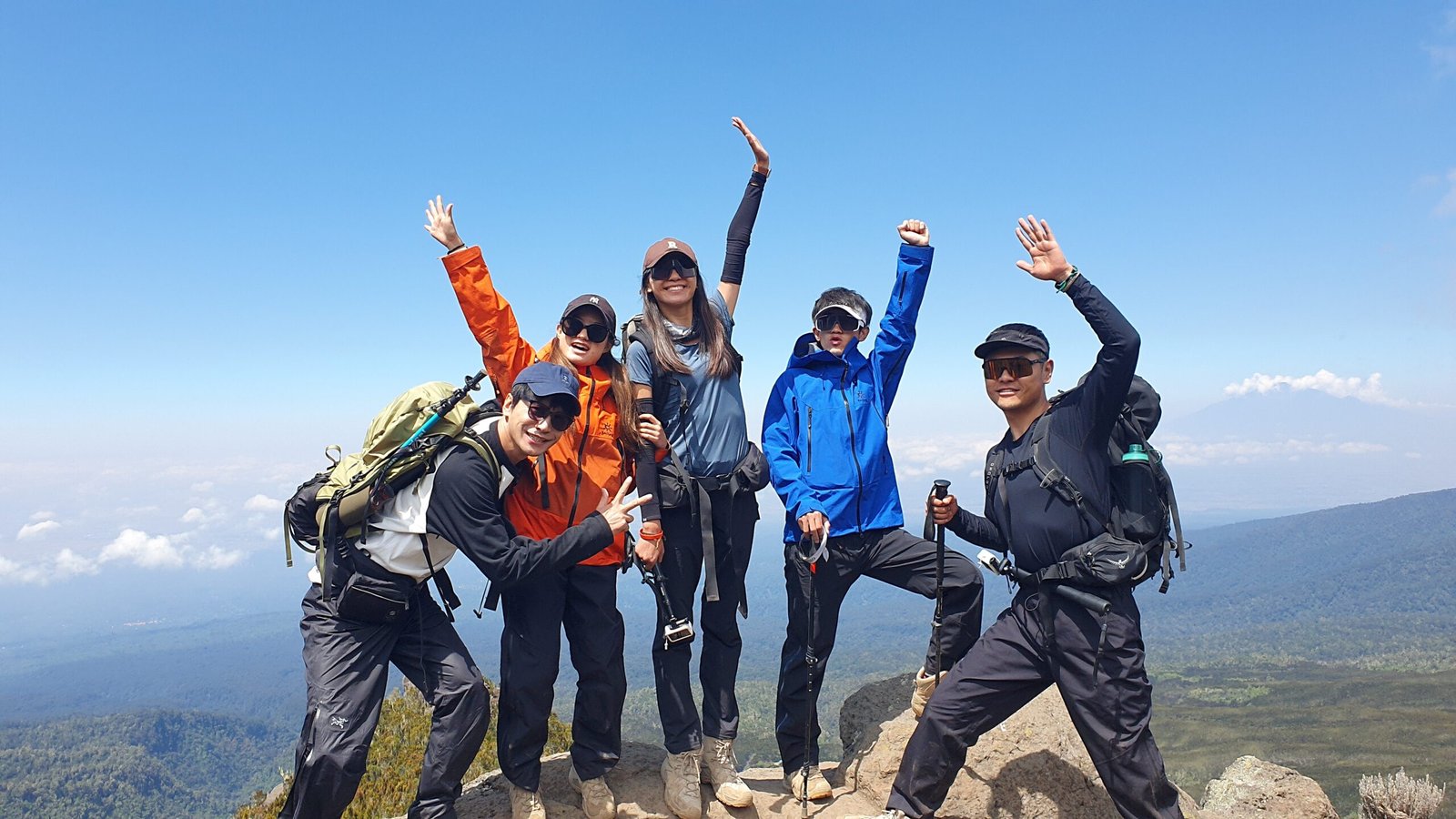Today’s update to the best ultimate Kilimanjaro Climbing Machame Route Guide 2025-2026
Today’s update to the best ultimate Kilimanjaro Climbing Machame Route Guide 2025-2026 is often called the “Whiskey Route,” is one of the most scenic and popular ways to reach the summit of Mount Kilimanjaro. For 2025-2026, it remains the go-to choice for many climbers due to its breathtaking views and higher success rates compared to other routes. Whether you’re planning to climb in 2025 or 2026, the Machame Route offers the perfect balance of challenge and beauty.
Why the Machame Route is Ideal for 2025-2026
The Machame Route is favored for its longer, more gradual ascent, which allows for better acclimatization, reducing the risk of altitude sickness. With its varied landscapes, from lush rainforests to alpine deserts, this route promises an unforgettable adventure. The Machame Route is the most popular due to its high summit success rates (around 85-90%) and offers a more scenic alternative to the shorter Marangu Route

Best Time to Climb the Machame Route
The best months for climbing Kilimanjaro via the Machame Route are during the dry seasons, particularly:
Late June to October
December to February
During these periods, the weather is more stable, with less rainfall and clearer skies, making your trek both safer and more enjoyable. However, these are also the busiest months, so it’s essential to plan and book early
Why Choose the 6-Day Itinerary?
The 6-day Machame itinerary is a popular choice for trekkers who want to reach the summit without extending the journey unnecessarily. While a 7-day itinerary allows for more gradual acclimatization, the 6-day option is manageable for those who are physically prepared and willing to push their limits. It offers a mix of challenges and beauty, from dense rainforest to alpine desert and glacial landscapes.
Preparing for the Machame Route
Physical Preparation
To successfully trek the Machame Route in 6 days, you should be in good physical condition. Strengthening your cardiovascular fitness, endurance, and leg muscles will help you cope with the altitude and long days of hiking.
Gear and Packing Essentials
Your gear list should include layered clothing for varying temperatures, waterproof gear, sturdy hiking boots, trekking poles, a warm sleeping bag, and personal items like sunscreen, snacks, and a headlamp.
Altitude and Acclimatization Tips
Acclimatization is critical for your Kilimanjaro success. Walk slowly, drink plenty of water, and “climb high, sleep low,” following the natural terrain changes to give your body time to adjust to the altitude.
Today’s update to the best ultimate Kilimanjaro Climbing Machame Route Guide 2025-2026 Day by day itinerary
Day 1: Machame Gate to Machame Camp
Starting Point: Machame Gate (1,800 meters / 5,905 feet)
Ending Point: Machame Camp (3,000 meters / 9,843 feet)
Distance: 11 kilometers (7 miles)
Duration: 5-7 hours
Terrain: Rainforest
Your journey begins at the Machame Gate, where you’ll register and meet your guide and porters. After a quick briefing, you’ll start the hike through dense tropical rainforest. The trail is well-defined, but can be slippery, especially during the rainy season. This part of the trek is rich with wildlife, and you might encounter black-and-white colobus monkeys swinging from the trees.
After several hours, you’ll arrive at Machame Camp, located at the edge of the rainforest and moorland zones. At this point, you’ve already gained significant altitude, and the temperature starts to drop as night approaches.
Day 2: Machame Camp to Shira Camp
Starting Point: Machame Camp (3,000 meters / 9,843 feet)
Ending Point: Shira Camp (3,840 meters / 12,598 feet)
Distance: 5 kilometers (3 miles)
Duration: 4-6 hours
Terrain: Moorland
Day two begins with a steep ascent out of the forest into a moorland zone with stunning views of the mountain and surrounding plains. The vegetation here becomes more sparse, with hardy bushes and giant lobelias dotting the landscape.
The hike takes you across the Shira Plateau, a high-altitude desert plateau formed by volcanic activity, and ends at Shira Camp, which offers expansive views of the western breach and Kibo Peak. It’s important to pace yourself here as the altitude starts to become noticeable.
Day 3: Shira Camp to Lava Tower to Barranco Camp
Starting Point: Shira Camp (3,840 meters / 12,598 feet)
Ending Point: Barranco Camp (3,960 meters / 12,992 feet)
Distance: 10 kilometers (6 miles)
Duration: 6-8 hours
Terrain: Alpine Desert
Day three is crucial for acclimatization, as you’ll ascend to the Lava Tower at 4,630 meters (15,190 feet) before descending to Barranco Camp. This “climb high, sleep low” approach is vital for preparing your body for the higher altitudes to come.
The terrain becomes more barren, resembling a Martian landscape, with volcanic rocks and towering cliffs. After reaching Lava Tower, you’ll descend into the lush Barranco Valley, where you’ll camp for the night. The Barranco Camp is situated in a beautiful spot beneath the famous Barranco Wall, a towering rock face that you’ll tackle the next day.
Day 4: Barranco Camp to Karanga Camp
Starting Point: Barranco Camp (3,960 meters / 12,992 feet)
Ending Point: Karanga Camp (4,035 meters / 13,235 feet)
Distance: 5 kilometers (3 miles)
Duration: 4-5 hours
Terrain: Alpine Desert
Day four starts with the challenging Barranco Wall, a steep 257-meter (843 feet) scramble that tests your endurance and climbing skills. Although it looks intimidating, the wall is manageable with the help of your guides, and the views from the top are well worth the effort.
The trail continues through the alpine desert to Karanga Camp, where you’ll rest and prepare for the final ascent to Barafu the next day. Karanga is the last water point before the summit, so your team will collect and purify water for the days ahead.
Day 5: Karanga Camp to Barafu Camp
Starting Point: Karanga Camp (4,035 meters / 13,235 feet)
Ending Point: Barafu Camp (4,640 meters / 15,223 feet)
Distance: 4 kilometers (2.5 miles)
Duration: 4-5 hours
Terrain: Alpine Desert
This is a relatively short hike, but the altitude makes it strenuous. You’ll be walking through a bleak, wind-swept landscape toward Barafu Camp, which serves as the base camp for your final summit push.
Upon arrival at Barafu, you’ll rest for a few hours before beginning the midnight ascent to Uhuru Peak. Ensure you eat well and hydrate, as summit night requires significant physical and mental effort.
Day 6 (Part 1): Summit Day (Barafu Camp to Uhuru Peak)
Starting Point: Barafu Camp (4,640 meters / 15,223 feet)
Ending Point: Uhuru Peak (5,895 meters / 19,341 feet)
Distance: 5 kilometers (3 miles)
Duration: 7-9 hours ascent
Terrain: Glacier, Scree
The final push to the summit begins around midnight, in freezing temperatures and high winds. You’ll hike in the dark with your headlamp lighting the way, zigzagging up the steep switchbacks of the crater rim. After hours of relentless climbing, you’ll reach Stella Point at 5,739 meters (18,825 feet), where you can briefly rest before the final 1-hour trek to Uhuru Peak.
At the summit, you’ll stand on the roof of Africa, basking in the glory of your accomplishment. Take in the panoramic views of glaciers, volcanic craters, and the vast Tanzanian plains below.
Day 6 (Part 2): Descent to Mweka Camp
Starting Point: Uhuru Peak (5,895 meters / 19,341 feet)
Ending Point: Mweka Camp (3,100 meters / 10,170 feet)
Distance: 12 kilometers (7.5 miles)
Duration: 6-7 hours descent
Terrain: Scree, Rainforest
After a brief celebration at the summit, you’ll begin the long descent back to Barafu Camp. This section can be tough on the knees, but trekking poles will help. After a short rest and brunch at Barafu, you’ll continue descending to Mweka Camp, passing through the alpine desert and moorland into the lush rainforest.
Mweka Camp, nestled among the trees, is your final resting place before exiting the park. The air here is rich with oxygen compared to the summit, and you’ll feel a great sense of relief as the hardest part of the trek is behind you.
Wildlife and Scenic Highlights Along the Machame Route
The Machame Route is rich in wildlife, especially in the rainforest zones, where you can see colobus monkeys, birds, and even small antelope. As you ascend, the plant life changes dramatically, from dense jungle to heathlands with giant groundsel and lobelias, and finally, the stark alpine desert and glaciers near the summit.
Health and Safety Tips for the Machame Route
The key to staying safe on the Machame Route is to stay hydrated, walk slowly, and listen to your guides. Altitude sickness can affect anyone, regardless of fitness level, so be vigilant about the symptoms, such as headaches, nausea, and dizziness. If you feel unwell, notify your guide immediately.
What to Expect from the Guides and Porters
Your guides and porters are an essential part of the journey. They will carry your gear, set up camp, cook meals, and ensure your safety. It’s customary to tip the guides and porters at the end of the trek, and they greatly appreciate recognition for their hard work.
Best Time to Hike the Machame Route
The best time to trek the Machame Route is during the dry seasons: January to mid-March and June to October. These months offer the most stable weather, although it’s possible to climb Kilimanjaro year-round.
Machame Route vs Other Kilimanjaro Routes
The Machame Route is often compared to the Lemosho, Rongai, and Marangu routes. Machame is more scenic and has a higher success rate than the shorter Marangu route, while the Lemosho route is similar in terms of difficulty and scenery but less crowded.
Essential Gear for the 6-Day Machame Route
Your gear should include essentials like a waterproof jacket, warm clothing, sturdy boots, gloves, hats, and trekking poles. You’ll also need a good sleeping bag rated for sub-freezing temperatures. Don’t forget personal items like sunscreen, a first-aid kit, and energy snacks.
Today’s update to the best ultimate Kilimanjaro Climbing Machame Route Guide 2025-2026 Frequently Asked Questions (FAQs)
Can I Complete the Machame Route in 6 Days? Yes, the 6-day itinerary is designed to allow trekkers to summit Kilimanjaro, but it requires proper acclimatization, physical fitness, and mental determination.
What Is the Success Rate for the Machame Route? The success rate for the Machame Route is approximately 85%, one of the highest among Kilimanjaro routes, thanks to the gradual ascent and varied landscapes.
Do I Need Prior Mountaineering Experience? No, but previous trekking experience is helpful. Guides will assist you along the way, and no technical climbing skills are required.
What’s the Weather Like on the Machame Route? Weather conditions vary dramatically with altitude. Expect hot, humid conditions at the base, cold nights at higher camps, and freezing temperatures at the summit.
What Is the Total Cost of the Machame Trek? The cost of a 6-day Machame trek typically ranges from $1,500 to $2,500, depending on the tour operator, group size, and services included.
How Do I Handle Altitude Sickness on Kilimanjaro? Listen to your body, ascend slowly, stay hydrated, and communicate with your guide. In severe cases, descending to a lower altitude is the only solution.
Remember Today’s update to the best ultimate Kilimanjaro Climbing Machame Route Guide 2025-2026 is A Journey of a Lifetime
Climbing Kilimanjaro via the 6-day Machame Route is a challenging yet rewarding experience. From the diverse ecosystems to the stunning views, every step brings new surprises. With proper preparation and the support of your guides, you’ll stand at the summit of Africa’s highest peak, forever changed by this incredible adventure.

